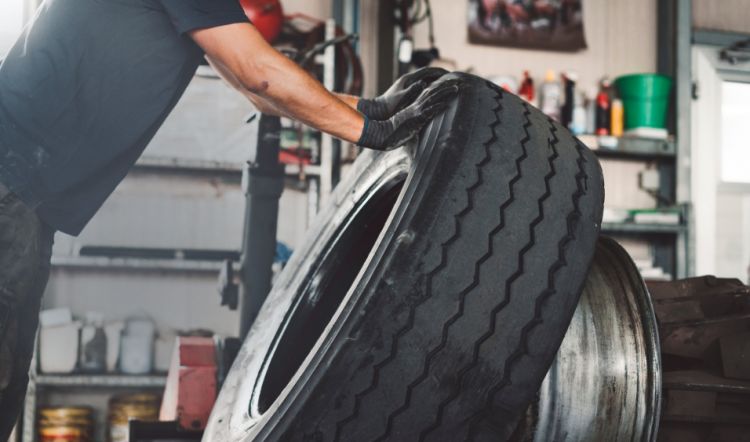Best Tire Management to Improve Fleet Performance
Optimize tire management through proactive maintenance practices and real-time monitoring to enhance fleet safety, reduce costs, and prevent unexpected downtime.

Fleet managers often overlook tire management, yet it plays a crucial role in ensuring vehicle safety, improving fuel efficiency, and extending the vehicle lifespan. By prioritizing tire management and proper tire usage, fleet managers can significantly lower the risk of breakdowns, accidents, and unplanned downtime.
What Is Tire Management?
Tire management is the process of monitoring, maintaining, and optimizing fleet tires through regular inspections, preventive maintenance, digital tracking, and driver training. A well-structured tire management system helps fleet managers improve vehicle safety, reduce fuel and tire expenses, and minimize disruptions caused by unplanned downtime.
How Do You Manage Tires in a Fleet?
Effective tire management includes four essential actions:
- Regular inspections: Check tire pressure, tread depth, signs of irregular wear, and visible damage;
- Preventive maintenance: Rotate tires, ensure proper alignment, calibrate pressure, and log all maintenance activities;
- Digital records: Use fleet management software to monitor each tire's condition, usage history, and replacement cycle;
- Driver coaching: Educate drivers to recognize early signs of wear or damage and report issues immediately.
Following these practices ensures that each tire is used safely and efficiently throughout its lifecycle.
The Role of Technology in Tire Management
Technology plays an important role in modern tire management as it automates processes and provides actionable insights using real-time data. Here’s how:
- Fleet maintenance software helps track tire mileage, record inspections, schedule rotations, and send automatic alerts when maintenance is due, making it a key solution of effective vehicle maintenance software for fleets.
- Tire Pressure Monitoring Systems (TPMS) use sensors to monitor tire pressure and temperature in real-time, alerting you to underinflated or overheating tires.
- Data-driven insights allow you to analyze average tire pressure by vehicle type, compare brand performance, and estimate tire lifespan more accurately, supporting better planning, lower costs, and improved safety.
By combining innovative software with sensor technology, you can proactively approach tire management and avoid costly surprises.
Why Tire Management Matters
A well-implemented tire management system delivers several tangible benefits:
- Improved safety: Reduces blowouts and provides better vehicle control.
- Cost savings: Longer tire life, reduced fuel consumption, and less fines.
- Minimized downtime: Scheduled maintenance and early issue detection prevent unexpected breakdowns.
Common Mistakes to Avoid
Even with the right tools, these common errors can compromise your tire management efforts:
- Ignoring manufacturer-recommended pressure levels;
- Delaying necessary replacements or repairs;
- Using tires that don’t meet vehicle or operational specifications.
Ready to turn your fleet’s tire management into a competitive advantage? Discover how our fleet management software helps you monitor tire health in real time, reduce operational costs, and keep your fleet safe on the road.
- Frotcom
- Tire Management
- Vehicle maintenance
- Tire Management System
- Tire Pressure Monitoring System
- TPMS
- TPMS sensor
- Fleet safety
- Fleet maintenance
- Tire Inspection
- Fleet optimization
- Preventive maintenance
- Tire Tracking
- Driver coaching
- Fleet efficiency
- Fleet Telematics

